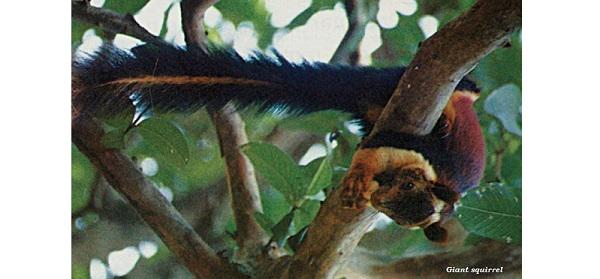Biology - Quick Guide
Biology - Structure and Functions
Introduction
The basic structural unit of an organ is known as the cell.
In 1665, Robert Hooke discovered the cell.
A cell is a living organism.
A human body has trillions of cells, which vary in shapes and sizes.
The organism, which is made up of more than one cell, is known as multicellular organism.
The single-celled organisms are known as unicellular organism. E.g. Amoeba.
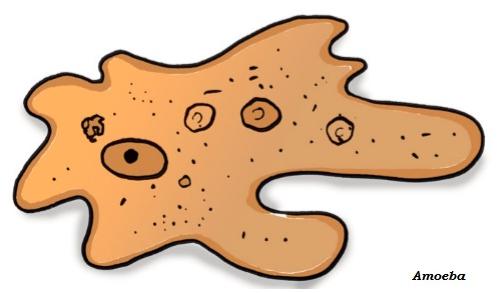
A single-celled organism performs all the essential functions that a multicellular organism performs.
Unlike other organisms, Amoeba has no definite shape; so, it keeps on changing its shape.
Amoeba has pseudopodia, which means – pseudo means false and podia means feet.
Amoeba is a full-fledged organism capable of independent existence.
Shape of the cells are normally round, spherical, or elongated.
Protoplasm is known as the living substance of the cell.
The cells having nuclear substances without nuclear membrane are known as prokaryotic cells. E.g. bacteria and blue green algae.
The cells having well organized nucleus with a nuclear membrane are designated as eukaryotic cells. All multicellular organisms are eukaryotic cells.
Cell Structure and Function
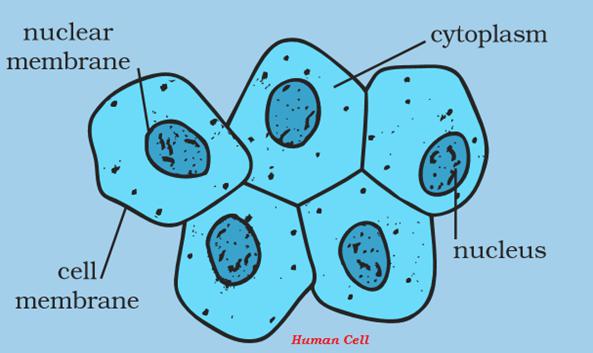
Cell membrane is also known as the plasma membrane.
The plasma membrane is porous and allows certain substances or materials move both inward and outward.
The central dense round structure in the center is known as nucleus.
The jelly-like substance between the nucleus and the cell membrane (as shown in the above image) is known as cytoplasm.
Different organelles of cells are also present in the cytoplasm such as Mitochondria, Golgi bodies, Ribosomes, etc.
Located in central part, nucleus is almost in spherical shape.
Nucleus is separated from the cytoplasm by a porous membrane known as the nuclear membrane.
The smaller and spherical structure, found inside the nucleus, is known as nucleolus.
Nucleus contains thread-like structures known as chromosomes.
Chromosomes carry genes and help in inheriting the characteristics of the parents to the offspring.
Gene is a fundamental unit of inheritance in living organisms.
The entire constituents of a living cell are known as protoplasm, which include nucleus and cytoplasm.
Plant Cell
The cell membrane provides shape to the cells of plants and animals.
In plant cell, cell wall is an additional covering over the cell membrane.

An animal cell does not have cell wall.
Cell wall gives shape and rigidity to plant cells.
Cell wall gives protection, plant cells need protection against varying temperature, high wind speed, atmospheric moisture, etc.
Bacterial cell also has a cell wall.
Usually, most of the cells are microscopic in size and are not visible to the naked eye.
The size of smallest cell is 0.1 to 0.5 micrometer found in bacteria.
The size of largest cell is 170 mm × 130 mm, found in the egg of an ostrich.
The size of the cells however has no relation with the size of the body of the animal or plant.
Some small colored bodies in the cytoplasm of the cells of Tradescantia leaf are known as plastids.
Plastids are found in different colors.
Some plastids have green pigment and known as chlorophyll.
Green colored plastids are known as chloroplasts.
Chloroplasts give green color to the leaves.
Chlorophyll is essential for the photosynthesis.
Biology - The Fundamental Unit of Life
Introduction
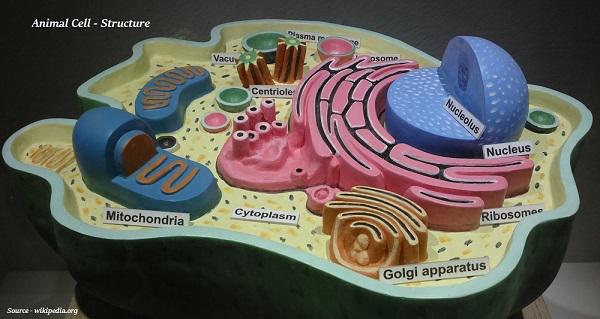
In 1674, Leeuwenhoek, with the help of developed microscope, discovered the free living cells in pond water.
In 1831, Robert Brown had discovered the nucleus in the cell.
In 1839, Purkinje used the term ‘protoplasm’ for the fluid substance found in the cell.
The cell theory was proposed by Schleiden (1838) and Schwann (1839).
According to the cell theory, all the plants and animals are composed of cells and that the cell is the basic unit of life.
In 1855, Virchow further expanded the cell theory and suggested that all cells arise from pre-existing cells.
In 1940, the discovery of electron microscope made possible to observe and understand the complex structure of the cell.
Unicellular Organisms
The single cellular organisms, such as Amoeba, Chlamydomonas, Paramoecium, and bacteria, are known as unicellular organisms.
Multicellular Organisms
The organisms consisting of many cells are known as multicellular organisms. E.g. human being, animals, birds, etc.
Significant Characteristics of Cells
Each living cell has the aptitude to perform certain basic functions that are characteristic of all living forms.
Each such cell has certain specific components within it known as cell organelles.
Different types of cells have different function and each cell organelle performs a special function.
These organelles collectively constitute the basic unit of life known as cell.
All cells are found to have the same organelles, irrespective of their different functions and the organism they found in.
Structural Organization of Cell
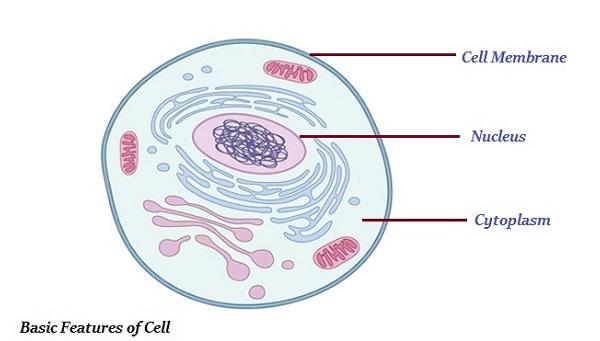
Plasma Membrane/Cell Membrane
Plasma membrane is the outermost covering layer of the cell (as shown in the image given above).
Plasma membrane allows certain materials to enter inside the cell and come out from the cell; therefore, it is known as selectively permeable membrane.
The movement of water molecules through the selectively permeable membrane is known as osmosis.
Cell Wall
Plant cells have an addition protecting cover known as cell wall (absent in animal cell).
The cell wall lies outside the plasma membrane; likewise, it also covers plasma membrane.
The cell wall is essentially composed of cellulose.
Nucleus
Nucleus or nuculeus is a Latin term and its meaning is kernel or seed.
The nucleus has a double layered covering, which is known as nuclear membrane (see the image given above).
The nuclear membrane has some pores, which allow certain materials come inside (in nucleus) and go outside (in the cytoplasm).
The most significant feature of nucleus is – it contains chromosomes.
Chromosomes are rod-shaped structures and it is visible only when the cell is about to divide.
Chromosomes are composed of DNA and protein.
DNA (Deoxyribo Nucleic Acid) molecules contain inheritance features from parents to next generation.
DNA molecules also contain the information essential for constructing and organizing cells.
Functional segments of DNA are known as genes.
DNA is present as the part of chromatin material.
Chromatin material is visible as entangled mass of thread like structures (as shown in the image given below).
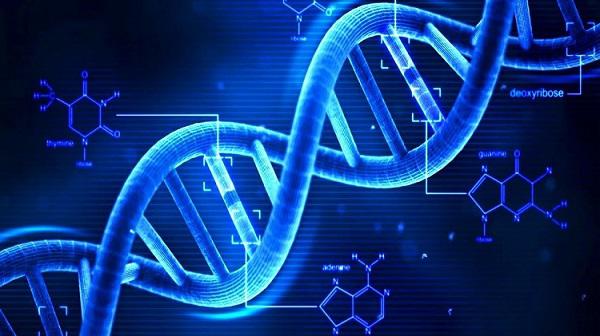
Whenever the cell is about to divide, the chromatin material gets organized into chromosomes.
The nucleus plays a central and significant role in cellular reproduction.
The cell, which has no nuclear membrane, is known as prokaryotes (i.e. Pro = primitive or primary; karyote ≈ karyon = nucleus). See the image given below:

The cell, which has a nuclear membrane, is known as eukaryotes.
Prokaryotic cell does not have many other cytoplasmic organelles those are present in eukaryotic cells (see the image given above).
Cytoplasm
Cells consist of cytoplasm inside the cell membrane, which contains many biomolecules including proteins and nucleic acids.
There are many structures found in the cytoplasm known as cell organelles.
Cell Organelles
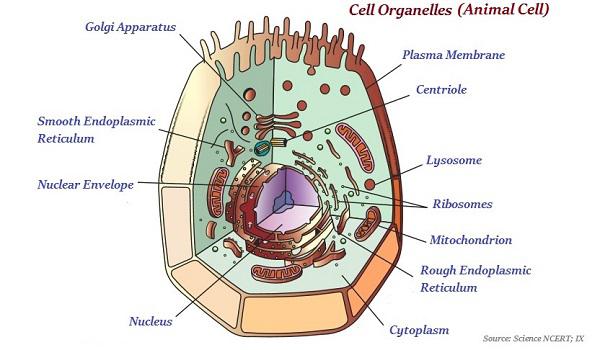
Endoplasmic Reticulum
The endoplasmic reticulum (or simply ER) is a large network of membrane-bound tubes and sheets (see the image given above).
Based on visual structure, ER is categorized as rough endoplasmic reticulum (RER) and smooth endoplasmic reticulum (SER).
When the ribosome attached on the surface of ER, it is known as Rough Endoplasmic Reticulum and without ribosome, it is known as Smooth Endoplasmic Reticulum.
The SER helps in the manufacturing of fat molecules, or lipids, which is important for cell functioning.
One of the significant functions of ER is to serve as channels for the transportation of materials (especially proteins) in various regions of the cytoplasm and also between the cytoplasm and the nucleus.
Ribosome
The ribosomes, normally, present in all active cells.
Ribosome are the sites of protein manufacturing.
Golgi Apparatus
The Golgi Apparatus is named after the name of its discover Camillo Golgi.
Golgi Apparatus consists of a system of membrane-bound vesicles arranged roughly parallel to each other in stacks known as cisterns (see the image given above).
The significant functions of Golgi Apparatus are the storage, modification, and packaging of products in vesicles.
The Golgi apparatus also helps in the formation of lysosomes.
Lysosomes
Lysosomes are a sort of waste disposal system of the cell.
Lysosomes help in keeping the cell clean by digesting the foreign material as well as worn-out cell organelles.
Lysosomes contain powerful digestive enzymes capable of breaking down all sorts of organic materials.
Lysosome has a typical feature i.e. when the cell gets damaged lysosome most likely bursts and the released enzymes digest their own cell. Because of this reason, lysosome is also known as the ‘suicide bags’ of a cell.
Mitochondria
Mitochondria, commonly, are known as the powerhouses of the cell.
Mitochondria release the energy required for various chemical activities (essential for the life).
Mitochondria release energy in the form of ATP (Adenosine Triphopshate) molecules.
ATP is popular as the energy currency of the cell.
Mitochondria have their own DNA and ribosomes; hence, they are capable to make some of their own proteins.
Plastids

Plastid is categorized as – Chromoplasts (it is colored plastids) and Leucoplasts (It is either white or colorless plastids).
Plastids contain chlorophyll pigment, which are known as Chloroplasts.
Chloroplasts play important role in the photosynthesis in plants.
Chloroplasts also contain various types of yellow or orange pigments.
Leucoplasts are the organelles in which some important materials such as starch, oils, and protein granules get stored.
Plastids look like mitochondria (in terms of external structure).
Like the mitochondria, plastids also possess their own DNA and ribosomes.
Vacuoles
Vacuoles are commonly the storage sacs that contain solid or liquid materials.
In animal cell, vacuoles are small; whereas in plant cell, vacuoles are of large size.
Plant cells vacuoles are filled with cell sap and provide turgidity and rigidity to the cell.
Biology - Tissues
Introduction
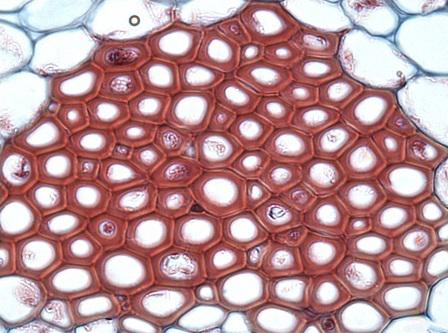
Plant Tissue
Meristematic Tissue
Meristematic tissue mainly consists of actively dividing cells, and helps in increasing the length and thickening the stems of the plant.
Meristematic tissue, commonly, present in the primary growth regions of a plant, for example, in the tips of stems or roots.
Depending on the region (where the meristematic tissues are found); meristematic tissues are classified as apical, lateral, and intercalary (see the image given below).
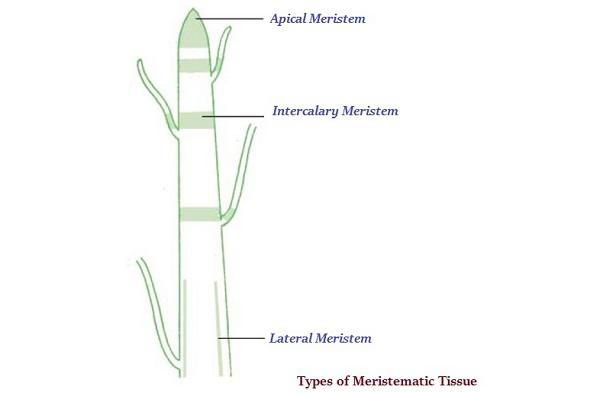
Apical meristem (as shown in the above image) is present at the growing tips of stems and roots and helps in their growth.
Lateral Meristem is found in stem or root region and helps in their growth.
Intercalary meristem is found at the base of the leaves or internodes (on twigs) and helps in growth.
Permanent Tissue
Simple Permanent Tissue

Sometimes, parenchyma tissue contains chlorophyll and performs photosynthesis, in such a condition, it is known as collenchyma.

The collenchyma tissue provides flexibility to plant and also provides mechanical support (to plant).
The large air cavities, which are present in parenchyma of aquatic plants, give buoyancy to the plants and also help them float, are known as aerenchyma.
The Sclerenchyma tissue makes the plant hard and stiff. For example, the husk of a coconut is made up of sclerenchymatous tissue.
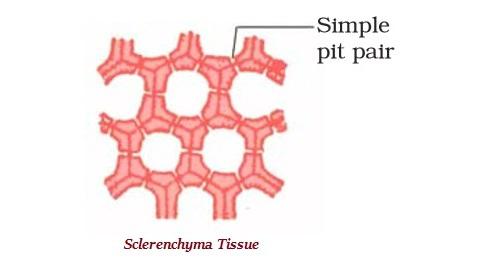
The cells of Sclerenchyma tissue normally are dead.
The outermost layer of cells is known as epidermis.
The epidermis is usually made up of a single layer of cells.

Complex Permanent Tissue
The complex tissue, normally, consists of more than one type of cells which work together as a unit.
Complex tissues help in the transportation by carrying organic material, water, and minerals up and down in the plants.
Complex Permanent Tissue is categorized as;
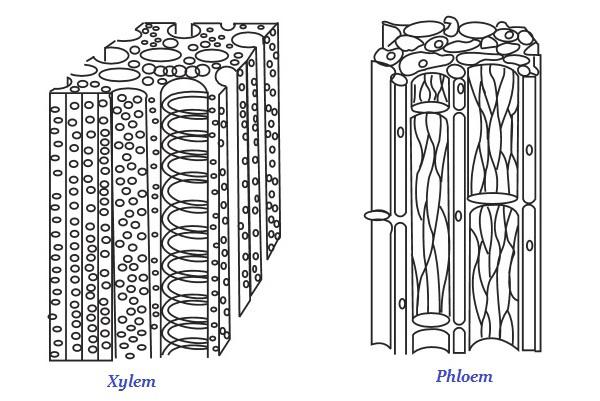
Xylem, normally, consists of tracheid, vessels, xylem parenchyma, and xylem fibers.
Xylem is accountable for the conduction of water and mineral ions/salt.
Phloem, normally, is made up of four types of elements namely −
Sieve tubes
Companion cells
Phloem fibers and
Phloem parenchyma
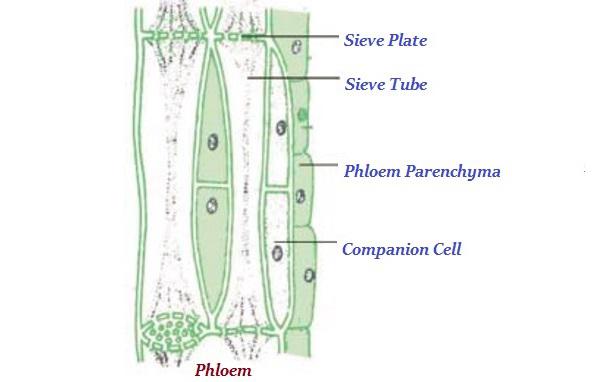
Biology - Animal Tissue
Introduction
Types of Animal Tissue
Epithelial Tissue
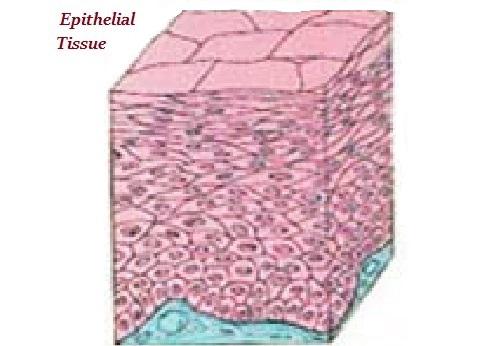
Epithelial tissue covers almost all organs and cavities within the body.
Epithelial tissue also forms a barrier to keep different body systems separate.
Epithelial tissue cells are closely packed (as shown in the image given above) and form a continuous layer.
Connective Tissue
Connective tissues are made up of the cells those are separated by non-living material, and known as an extracellular matrix.
This matrix could be either liquid or rigid.
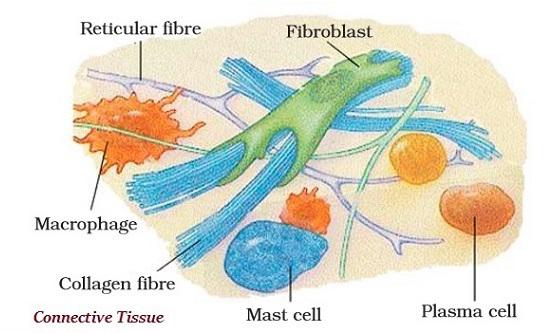
Connective tissues are further divided as −
Tendons are the example of fibrous connective tissue.
Bone is an example of a skeletal connective tissue.
Bone forms the framework and provide supports to the body.
Blood is an example of fluid connective tissue.
Blood has a fluid (liquid) matrix known as plasma.
In plasma, the red blood cells (RBCs), the white blood cells (WBCs), and the platelets are remaining suspended.
Muscular Tissue
Muscular tissue largely consists of elongated cells, and also known as muscle fibers.
The muscular tissue is accountable for the movements in our body.
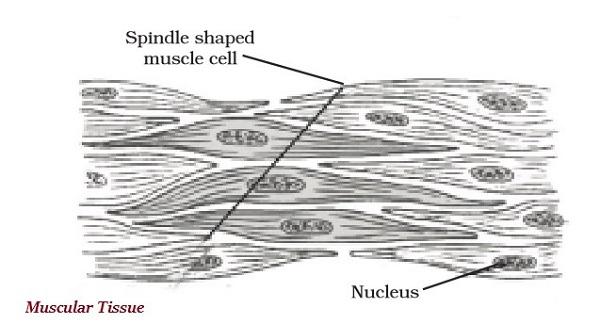
Nervous Tissue
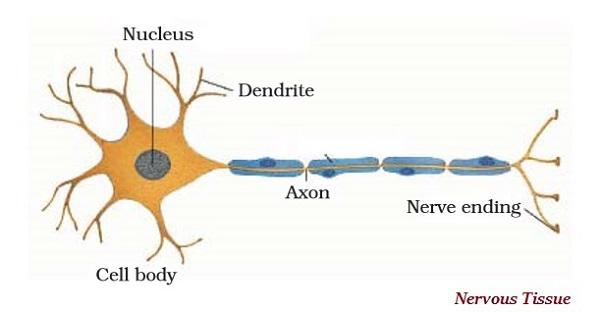
Cells of the nervous tissue are extremely particular and sensitive for being stimulated and then transmitting the stimulus swiftly from one place to another within the body.
The cells of nervous tissue are known as nerve cells or neurons.
Nerve impulses allow us to move our muscles whenever we want to do so.
Biology - Diversity in Living Organisms
Introduction
Biodiversity term is used to define the diversity of life forms.
Biodiversity is a word more often used to refer to the variety of life forms found in a particular geographic region.
Diversity of life forms of a geographic region provides stability in the respective region.
Base of Classification
Greek thinker Aristotle first classified animals based on their place of residence whether they lived on land, in water, or in the air.
Later, all the living organisms are identified and categorized on the basis of their body design in form and function.
The idea of evolution was first described by Charles Darwin in 1859 in his book namely – The Origin of Species.’
Charles Darwin first described this idea of evolution in 1859 in his book, ‘The Origin of Species.’
Hierarchy of Classification Groups
Some biologists, namely Ernst Haeckel (1894), Robert Whittaker (1959), and Carl Woese (1977) have attempted to classify all living organisms into broad categories and named them ‘Kingdoms.’
Whittaker categorized into five kingdoms namely −
Monera
Protista
Fungi
Plantae
Animalia
Further, these kingdoms have been classification by naming the sub-groups at various levels as −
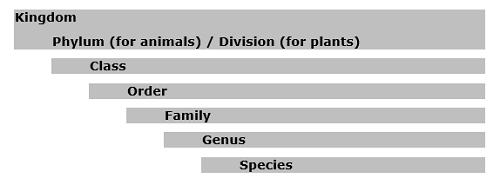
Monera
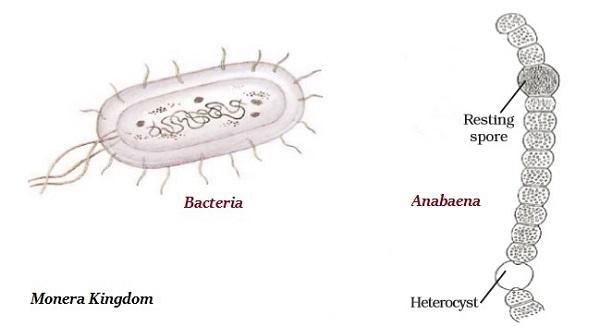
The examples of this monera kingdom are bacteria, anabaena, blue-green algae or cyanobacteria, and mycoplasma.
Protista
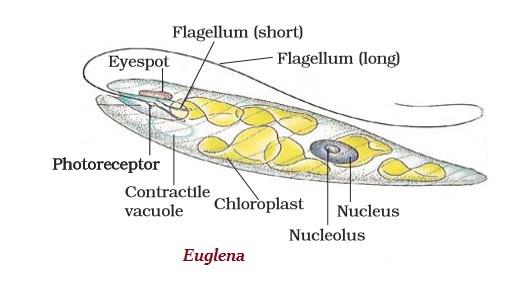
The examples of Protista kingdom are algae, euglena, diatoms, and protozoans, etc.
Fungi

Plantae
The organisms of this kingdom are multicellular eukaryotes with cell walls.
The organisms of plantae are autotrophs and they use chlorophyll for making their food (i.e. photosynthesis).
All plants are examples of plantae kingdom.
Animalia
Biology - Plantae Kingdom
Introduction
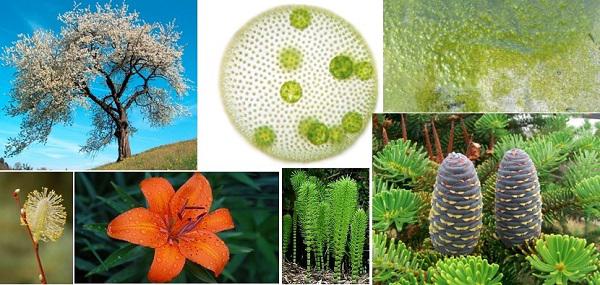
Classification of Plantae Kingdom
Based on distinct body structure, components, etc. plantae kingdom is further classified as −
Thallophyta
Bryophyta
Pteridophyta
Gymnosperms
Angiosperms
Let’s discuss each of them in brief −
Thallophyta
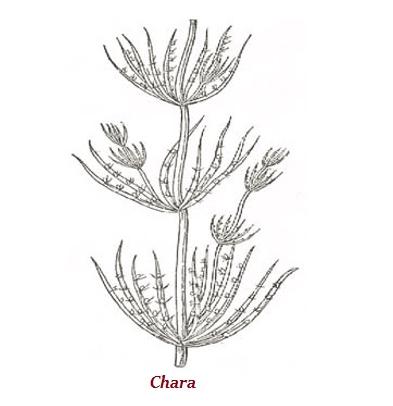
Some of the significant examples of thallophyta are Spirogyra, Ulothrix, Cladophora, Chara, etc.
Bryophyta
The plants of amphibian group are categorized as bryophyta.
Though not distinctly developed, but the plant body can be differentiated to form stem and leaf-like structures.
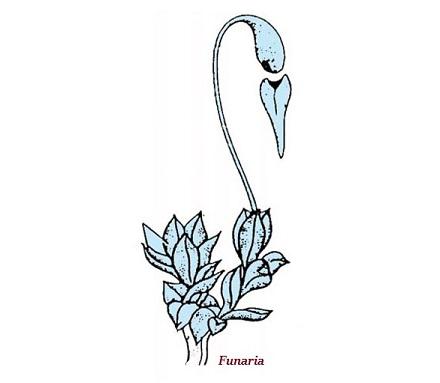
Pteridophyta
Plants of pteridophyta have defined roots, stem, and leaves.
Pteridophyta plants have specialized tissue that transports water and other materials from one part to another part of the plant.
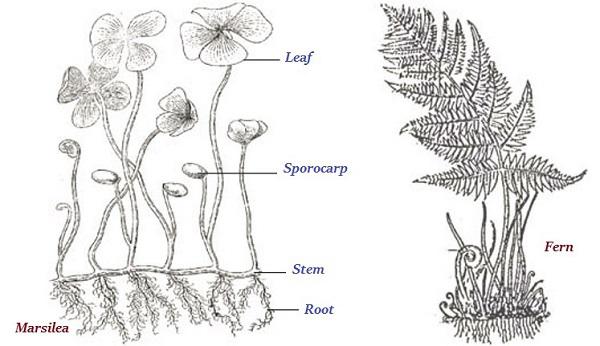
Examples of pteridophyta are Marsilea, ferns, and horse-tails.
The commonality among the thallophytes, the bryophytes, and the pteridophytes are – all of them have naked embryos, which are known as spores.
The reproductive organs of plants of these groups are known as ‘cryptogamae,’ which means ‘hidden reproductive organs’.
Gymnosperm
The plants of gymnosperm bear naked seeds.
These plants are normally perennial, evergreen, and woody.
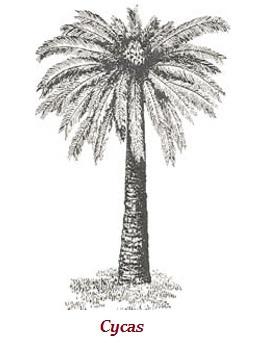
Angiosperms
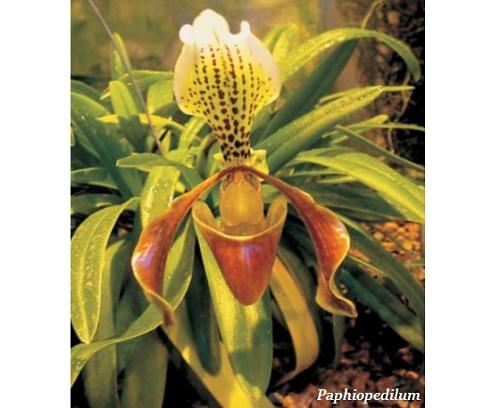
Biology - Animalia Kingdom
Introduction
The organisms, which are eukaryotic, multicellular, and heterotrophic, are categorized as Animalia kingdom.
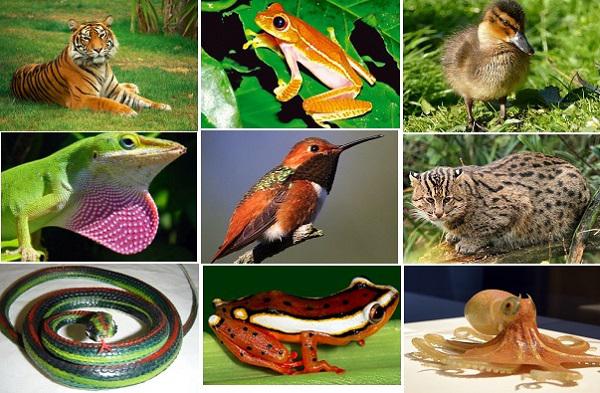
Classification of Animalia Kingdom
Porifera
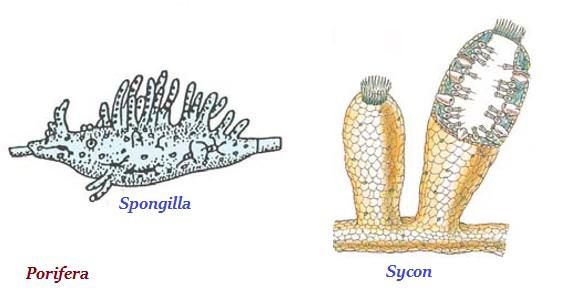
Coelenterata
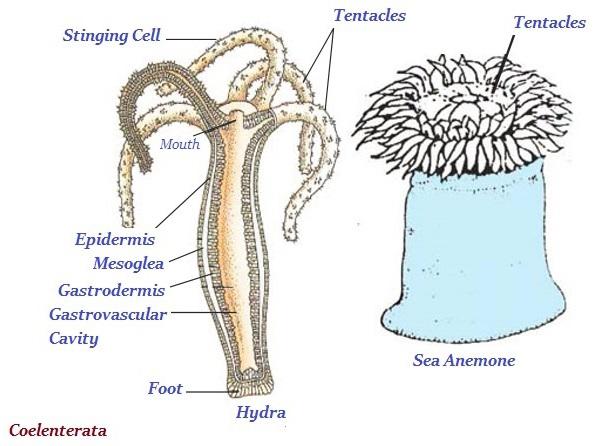
Platyhelminthes
The organisms of this group do not have true internal body cavity or coelom; so, they neither have well-developed organs.
The bodies of organisms of this group are flattened from top to bottom; therefore, they are also known as flatworms.
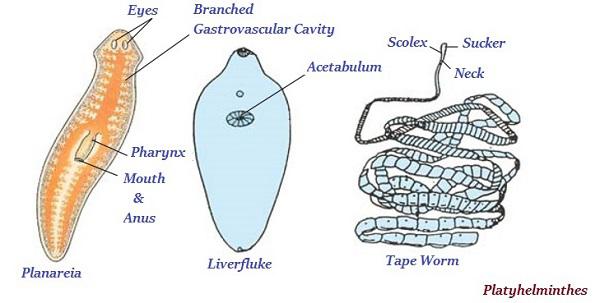
Planareia, liverfluke, tape worm, etc., are the typical examples of this group.
Nematoda
The organisms of nematode have cylindrical body.
The organisms have tissue, but as such no well-developed body (i.e. no real organ).
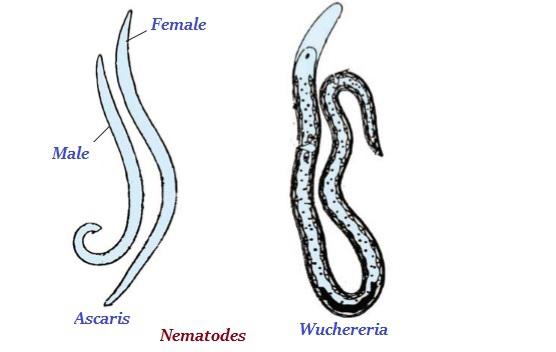
The filarial worms (causing elephantiasis disease), roundworm in the intestines, etc., are the common examples of nematodes.
Annelida
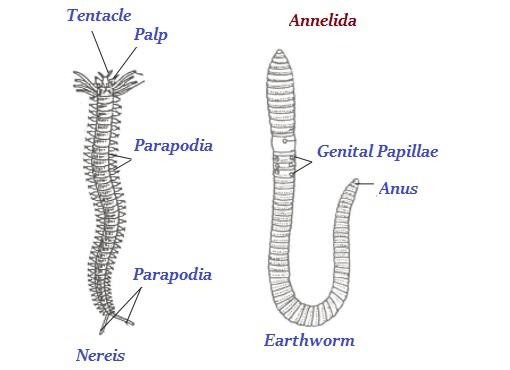
Arthropoda
Arthropoda, probably, is the largest group of animals.
The animals of this group don’t have well defined blood vessels rather there is an open circulatory system.
The literal meaning of arthropod is jointed legs; so, they have jointed legs.
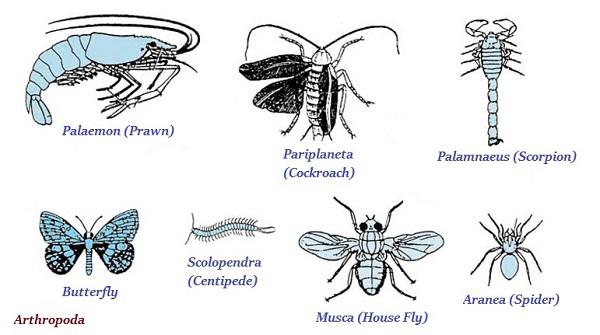
Prawns, butterflies, houseflies, spiders, scorpions, etc. are the typical examples of arthropod.
Mollusca
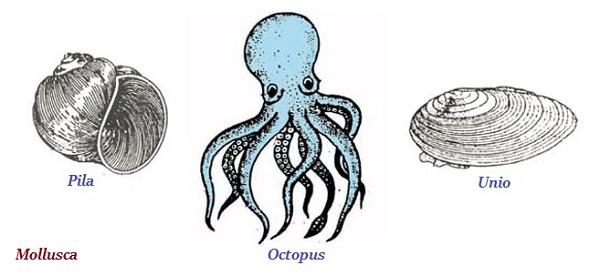
Echinodermata
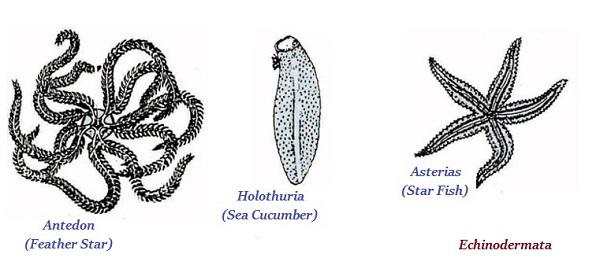
Protochordata
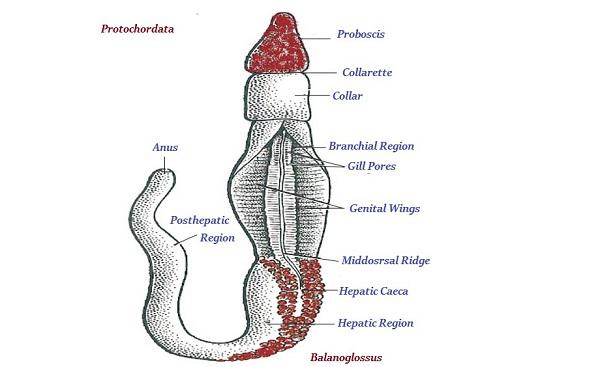
Vertebrata
Biology - Vertebrata
Introduction
The organisms of this kingdom have a true vertebral column and the internal skeleton structure.
Classification of Vertebrata
Pisces
The organisms of this group are typically different types of fishes.
Fishes can live only in water.
The skin fish is covered with scales/plates.
Fish use oxygen dissolved in water by using gills

Amphibia
The organisms of amphibia have mucus glands in the skin, and they have three-chambered heart.
Amphibian can live in water as well as on land.

Reptilia

Aves
The organisms of Aves group are warm-blooded.
The organisms of Aves group lay eggs except a few, such as bat.
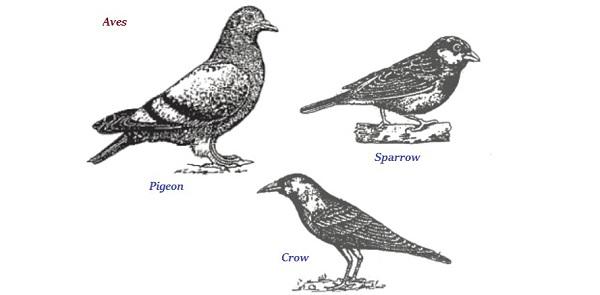
Mammalia
The organisms of Mammalia group are warm-blooded and they have four-chambered hearts.
Mammalia are typically characterized for their mammary glands.
Mammary glands produce milk to nourish the young one.
Most of the mammals produce live baby; however, a few of mammals, such as, the platypus and the echidna lay eggs.
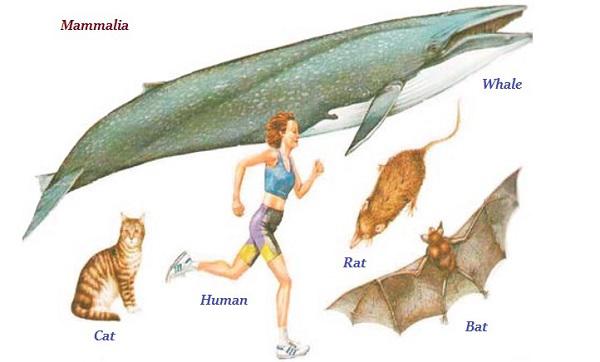
Biology - Transportation in Humans
Introduction
The blood is responsible to transport food, oxygen, and waste materials in human bodies.
Blood usually consists of a fluid medium known as plasma where the cells remain suspended.
Plasma is responsible to transport food, carbon dioxide, and nitrogenous wastes in dissolved form.
However, oxygen is carried by the red blood cells.
Many other substances such as salts, are also transported by the blood.
A Human Heart
The heart is one of the most significant muscular organs of a human body.
As both the oxygen and the carbon dioxide get transported by the blood; so, to avoid the oxygen-rich blood from mixing with the blood containing carbon dioxide, the heart has different chambers.
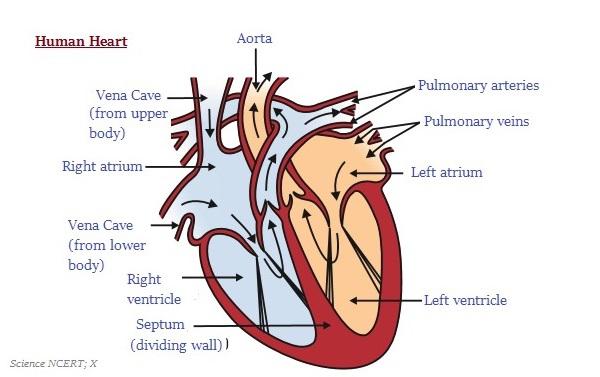
Oxygen-rich blood from the lungs comes to the thin-walled upper chamber of the heart on the left, i.e. the left atrium (see the image given above).
When it is collecting the blood, the left atrium relaxes; however, while the next chamber, i.e. the left ventricle expands, then it (left atrium) contracts, so that the blood is transferred to it.
Further, when the muscular left ventricle contracts (in its turn), the blood is pumped out to the body. Likewise, de-oxygenated blood comes from the body to the upper chamber on the right, the right atrium (as it expands).
When the right atrium contracts, the corresponding lower chamber, the right ventricle, dilates and this act transfers blood to the right ventricle, which in turn pumps it to the lungs for oxygenation.
The ventricles have thicker muscular walls (than the atria do), as ventricles have to pump blood into various organs.
There are valves that ensure that the blood does not flow backwards when the atria or ventricles contract.
The separation of the right side and the left side of the heart is beneficial, as it avoids oxygenated and deoxygenated blood from mixing.
The animals, which do not use energy to maintain their body temperature, their body temperature depends on the temperature in the environment.
Such animals (e.g. amphibians or many reptiles), have three-chambered hearts, and bear some mixing of the oxygenated and de-oxygenated blood streams.
Fishes, on the other hand, have only two chambers to their hearts; however, the blood is pumped to the gills and get oxygenated there, and then passes directly to the rest of the body.

Blood Pressure
The force that blood exerts against the wall of a vessel is known as blood pressure.
The blood pressure is much greater in arteries than in veins.
During the ventricular systole (i.e. contraction), the pressure of blood inside the artery, is known as systolic pressure.
On the other hand, the pressure in artery during ventricular diastole (relaxation), is known as diastolic pressure.
The normal measurement of systolic pressure is about 120 mm of Hg and diastolic pressure is 80 mm of Hg. Increase of this pressure is known as high blood pressure or hypertension.
The instrument that measures the blood pressure is known as sphygmomanometer.
Lymph
Some amount of plasma, proteins, and blood cells escape (through the pores present in the walls of capillaries), into intercellular spaces in the tissues and form the tissue fluid known as lymph.
Though lymph is similar to the plasma of blood, but it is colorless and contains less protein.
An important function of lymph is to carry digested and absorbed fat from intestine and drains excess fluid from extra cellular space back into the blood.
Biology - Transportation in Plants
Introduction
The plants have low energy needs, as they use relatively slow transport systems.
Plant transport systems move energy from leaves and raw materials from roots to all their parts.
The xylem (tissue) moves water and minerals obtained from the soil to all other parts of the plants.
The phloem (tissue) transports products of photosynthesis from the leaves (where they are synthesized) to other parts of the plant.
Movement of Water in Plants

Evaporation of water molecules from the cells of a leaf (see the image given above) creates a suction process, which pulls water from the xylem cells of roots; this process keeps going on.
The loss of water in the form of vapor from the leaves (i.e. aerial parts) of the plant is known as transpiration.
Transpiration, likewise, helps in the absorption and upward movement of water and minerals dissolved in it from roots to the leaves.
Transpiration also helps in the temperature regulation (in plants).
The transport of soluble products of photosynthesis is known as translocation, which occurs in the part of the vascular tissue known as phloem.
Along with photosynthesis products, the phloem also transports amino acids and other substances, which are ultimately delivered to roots, fruits, seeds, and to growing organs.
Biology - Excretion
Introduction
The biological process that involves in the removal of the harmful metabolic wastes from the human body is known as excretion.
Different species (organisms) use different processes for the excretion. E.g. many unicellular organisms remove their wastes by simple diffusion process from the body surface into the surrounding water.
Excretion in Human Beings
The body parts that the excretory system (of human beings) includes are −
A pair of kidneys
A pair of ureters
A urinary bladder
A urethra
Kidneys are located in the abdomen (see the image given below), one on either side of the backbone.
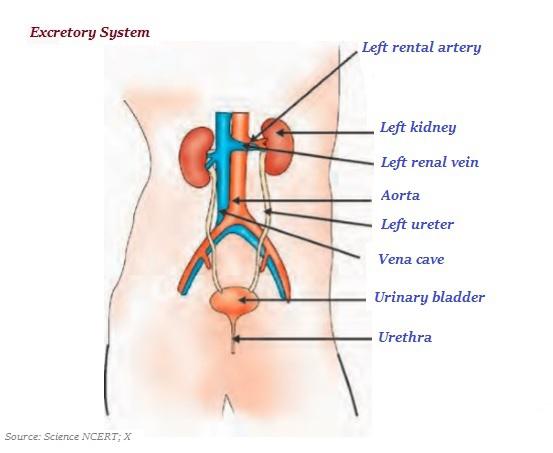
Urine that produced in the kidneys passes through the ureters into the urinary bladder where it gets stored until released through the urethra.
On the other hand, plants have completely different process for excretion than those of animals.
Oxygen (released in the day-time) itself can be considered as a waste product generated during photosynthesis.
Many plant waste products are stored in leaves that fall off.
Some other waste products, in plants, are stored as resins and gums, especially in old xylem.
Biology - Control and Coordination
Introduction
Nervous System
Nervous system is specialized system that provide control and coordination in animals.
All information, coming from our environment is detected by the specialized tips of some nerve cells, which are usually located in sense organs.
The information, acquired at the end of the dendritic tip (shown in the image given below) of a nerve cell, sets off a chemical reaction that creates an electrical impulse.
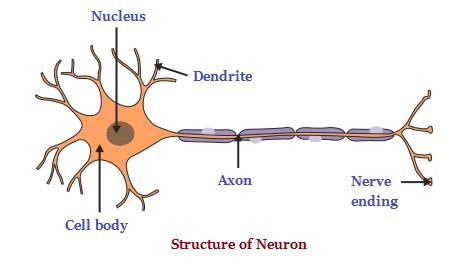
This (electrical) impulse, which travels from the dendrite tip to the cell body, and then along the axon to its end of the axon, sets off the release of some chemicals. These chemicals cross the gap, or synapse, and create a similar electrical impulse in a dendrite of the next neuron (see the image given below).
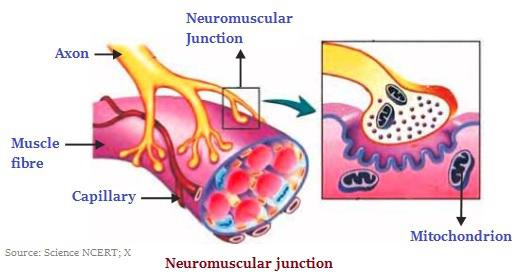
Reflex Actions
If the nerves that detect heat, cold, or any such kind of more sensational element move muscles in a simpler way; so, the process of detecting the signal or the input and responding to it by an output action, is known as reflex action and such connection is known as a reflex arc (see the image given below).

Human Brain
The communication between the central nervous system and the other parts of the body is established by the peripheral nervous system.
Peripheral nervous system consists of cranial nerves, which arise from the brain and spinal nerves.
The brain (shown in the image given below) facilitates us to recognize, think, and take actions accordingly.
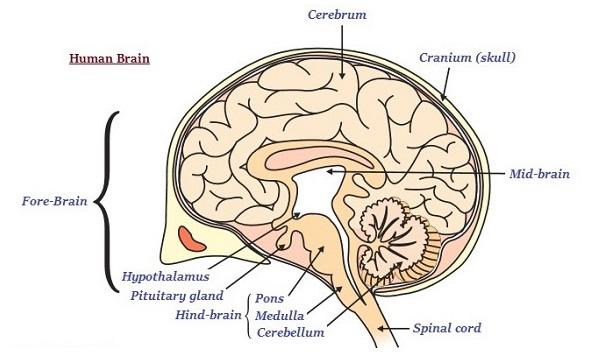
The brain is categorized into three major parts or regions, namely the fore-brain, mid-brain, and hind-brain.
Among these three parts (of the brain), fore-brain is the main thinking part of the brain; further, fore-brain are specialized for hearing, smell, sight, etc.
When brain gives command, muscle moves – it happens because muscle cells have special proteins that change both their (muscle’s) shape and arrangement in the cell in response to nervous electrical impulses.
Biology - Hormones in Animal
Introduction
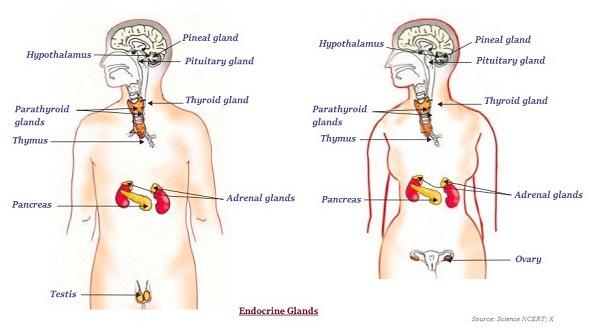
Adrenaline Hormone is secreted from the adrenal glands. It is secreted directly into the blood and then carried to different parts of the body.
On the other hand, plants have hormones that control and regulate their directional growth.
Iodine is essential for the thyroid gland that makes thyroxin hormone.
Further, Iodine is an essential element for the synthesis of thyroxin.
Deficiency of Iodine, that might cause goiter.
The term “goiter” refers to the abnormal expansion of the thyroid gland (resulting into swollen neck).
Thyroxin Hormone regulates carbohydrate, protein, and fat metabolism in the body and provide the best balance for body growth.
Growth hormone, which is secreted by the pituitary gland, regulates growth and development of the body.
The deficiency of growth hormone in childhood causes dwarfism short height.
During the age of 10-12, there are certain physical change in the bodies of children, which is caused by the secretion of testosterone in boys and oestrogen in girls.
As shown in the image given above, it is significant difference between male and female body i.e. males have testis (secretes Testosterone Hormone) and females have ovary (secretes Oestrogen Hormone).
Insulin is a hormone, which is produced by the pancreas and helps in regulating the sugar levels of blood.
If insulin is not secreted in proper amounts or on a proper time, the sugar level in the blood rises, which may cause different harmful effects in the body.
Biology - How do Organisms Reproduce?
Introduction
A basic occurrence in reproduction is the creation of a DNA copy; to produce copies of the DNA, cells use chemical reactions.
The DNA in the cell nucleus is actually the information source for creating proteins. Likewise, if the information is changed here, then different proteins will be created. And, these different proteins will eventually lead to altered the body designs.

DNA copies that generated would be similar, but may not be identical to the original. And, because of these variations, the new born cells are slightly different.
Further, the consistency of DNA copying during reproduction process is significant for the maintenance of body design and features.
Modes of Reproduction Used by Cell Organisms
The modes by which various Cell Organisms reproduce depend on their body designs. However, it is broadly categorized as −
Asexual Reproduction &
Sexual Reproduction
Let’s discuss each of them in Brief −
Asexual Reproduction
Fission
In some unicellular organisms such as Amoeba, the cell split into two cells during the cell division and produce two new organisms (see the image given below).
It is also known as binary fission.
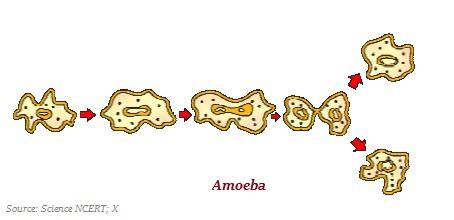
Many bacteria and protozoa simply split into two equal halves during their cell division and produce two identical organisms.
Remember, some other single-celled organisms, such as Plasmodium (the malarial parasite), divide into many daughter cells simultaneously, known as multiple fission (see the image given below).

Fragmentation
After the maturity, some multicellular organisms, such as Spirogyra, simply breaks up into smaller pieces and these pieces or fragments grow into new individuals.
Regeneration
Some of the organisms, such as Planaria, if its body cut or broken up into many pieces, then many of these pieces grow into complete separate individuals; the whole process is known as regeneration.
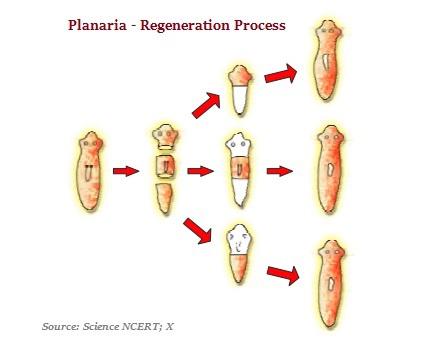
Budding
In some organisms, such as Hydra, because of the repeated cell division at one specific place, a bud develops, which later (once fully grown) gets detached from the parent body and becomes a new independent individual (see the image given below).

Vegetative Propagation
Under a favorable condition, there are many plants, which parts like the root, stem, and leaves develop into new plants; such process is known as vegetative propagation (see the image given below).

Spore Formation

Biology - Sexual Reproduction
Introduction
The sexual mode of reproduction comprises the process of combining DNA from two different individuals.
There are two germ-cells (responsible for producing a new organism); one is large and contains the food-stores whereas the other one is smaller and likely to be motile.
The motile germ-cell, normally, is known as the ‘male gamete’ and the germ-cell containing the stored food is known as the ‘female gamete.’
Sexual Reproduction in Flowering Plants
As shown in the image given below, flowers have different parts, such as sepals, petals, stamens, and carpels. Among these, stamens and carpels are the reproductive parts and contain the germ-cells.
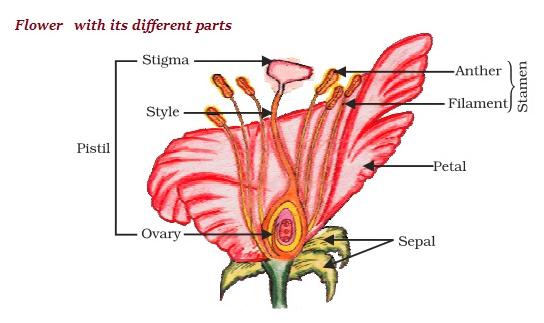
Stamen is the male reproductive part, which produces pollen grains (yellowish substance).
Carpel, which is present in the center of a flower, is the female reproductive part.
Carpel is made of three parts.
The bottom part, which is swollen, is the ovary; the middle part, which is elongated, is known as the style; and the terminal part, which may be sticky, is known as the stigma.

The ovary contains ovules and each ovule has an egg cell.
The male germ-cell that produced by the pollen grain fuses with the female gamete present in the ovule.
The fusion of the germ-cells or fertilization produces zygote, which is capable of growing into a new plant.
The flower, which contains either stamens or carpels, is known as unisexual, such as papaya, watermelon, etc.
The flower, which contains both stamens and carpels, is known as bisexual, such as Hibiscus, mustard, etc.
Reproduction in Human Beings
Male Reproductive System
The male reproductive system produces the germ-cells; further, other part of the reproductive system delivers the produced germ-cells to the site of fertilization.
The formation of sperms or germ-cells takes place in the testes.
The formation of sperm typically requires a lower temperature than the normal body temperature.
The testes secrete hormone, namely testosterone that brings changes in the appearance of boys at the time of their puberty.
The formed sperms are then delivered through the vas deferens, which unites with a tube coming from the urinary bladder.
The urethra, likewise, acts as a common passage for both the sperms and urine.
The sperms are fluids that consist of mainly genetic material; it has a long tail that helps to move towards the female germ-cell.
Female Reproductive System
The female germ-cells or eggs are produced in the ovaries.
The egg is transported from the ovary to the womb through a thin oviduct known as fallopian tube.
The two oviducts unite and form an elastic bag-like structure known as the uterus, which opens into the vagina through the cervix.
During the sexual intercourse, most likely, the egg and the sperm (zygote) get fertilized and implanted in the lining of the uterus.
The thickened lining (of the uterus) and richly supplied blood nourish the growing embryo (in the uterus).
The embryo receives nutrition from the mother’s blood with the help of a special tissue known as placenta.
Likewise, the development of a child inside the mother’s body, takes about nine months.
Biology - Reproduction in Animals
Introduction
Reproduction is the most essential for the continuation of a species.
Reproduction ensures the continuation of similar kinds of species, generation after generation.
Modes of Reproduction
Sexual Reproduction
In animals, males and females have different reproductive organs.
The reproductive parts in animals produce gametes that fuse and form a zygote.
The zygote develops into a new similar species.
The type of reproduction through the fusion of male and female gametes is known as sexual reproduction.
The male gametes, produced by testes, are known as sperms.
The female gametes, produced by ovary, are known as ova (or eggs).
In the process of reproduction, the first step is the fusion of a sperm and an ovum (egg).
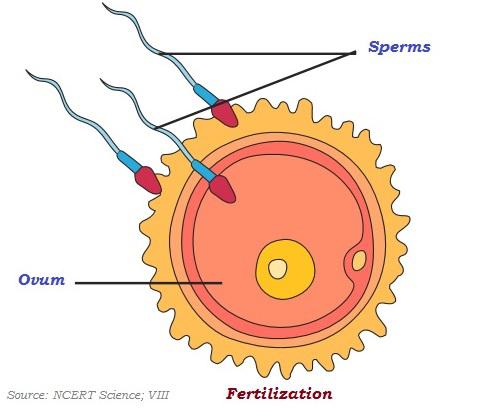
Fusion of the egg and the sperm is known as fertilization (as shown in the above image).
During the fertilization, the nuclei of the sperm and the egg fuse together and form a single nucleus that result into the formation of a fertilized egg also known as zygote (shown in the image given below).

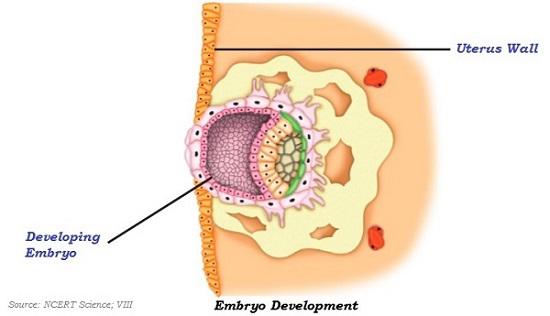
The embryo continues to develop in the uterus and develops body parts such as head, face, ear, eyes, nose, hands, legs, toes, etc.
The stage of the embryo in which different parts of the body develop and can be identified is known as foetus (shown in the image given below).
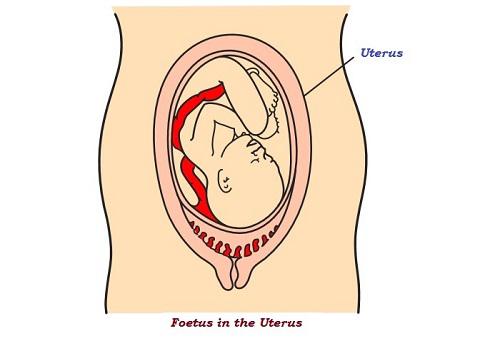
In a defined period of time, when the development of the foetus is complete, the mother gives birth to the baby.
The animal which gives birth to young ones is known as viviparous animal. E.g. Human, cow, dogs, etc.
The organism that lays eggs is known as oviparous animal. E.g. all birds (except bats), lizard, etc.
Asexual Reproduction
The type of reproduction in which only a single parent, gets divided into two new offspring, is known as asexual reproduction. E.g. Hydra and Amoeba.
In hydra, the individuals develop from the buds; therefore, this type of asexual reproduction is known as budding (shown in the image given below).

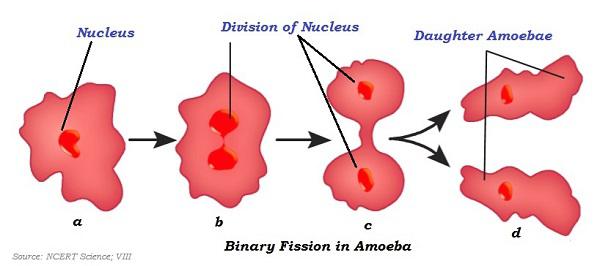
Cloning
Cloning is the modern science technique to produce an exact copy of a cell, any other living part, or a complete organism.
For the first time, cloning of an animal was successfully performed by Ian Wilmut and his colleagues at the Roslin Institute in Edinburgh, Scotland.
In 1996, they cloned successfully a sheep and named that Dolly.
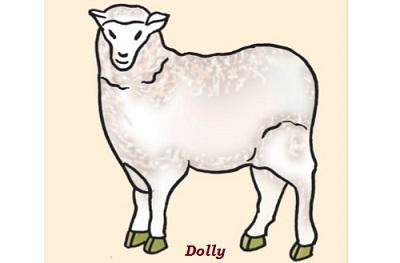
Biology - Reaching the Age of Adolescence
Introduction
The phase of life, when the body undergoes radical changes, leading to reproductive maturity, is known as adolescence.
Adolescence normally begins around the age of 11 and lasts up to 18 or 19 years of the age. However, the phase of adolescence varies from person to person.
Starting from thirteen (13) to nineteen (19), ‘teen’ is suffix and common in every number; therefore, adolescents are also known as ‘teenagers.’
In girls, adolescence phase may begin one year or two years earlier than the boys.
During the adolescence phase, the human body undergoes several changes, which are marked as the onset of puberty.
The most important change, which marks puberty, is that the boys and the girls become capable of reproduction.
Puberty, however, ends when an adolescent phase attains reproductive maturity.
Changes at Puberty
The most conspicuous change during the puberty is the swift increase in height.
In the beginning, girls grow faster than boys, but by reaching 18 years of the age, both attain their maximum height.
The rate of body growth (in terms of height) varies from person to person.
The changes occurring in adolescent boys and girls are also much different.
At puberty, especially the boys’ voice boxes or the larynxes begin to grow and develop larger voice boxes.
The growing larynxes in boys can be seen as a protruding part of the throat; it is known as Adam’s apple.
In girls, the larynx is small; hence, it is not visible from the outside.
Adolescence is also the phase of change in a person’s way of thinking.
Hormones, which are the chemical substances, are responsible for the changes in adolescence.
The testes (in boys), at the onset of puberty, release testosterone hormone.
Once puberty is reached in girls, ovaries begin to produce the hormone namely estrogen; it is responsible to the breasts develop.
Endocrine glands release hormones directly into the bloodstream.
In the body, there are many endocrine glands or ductless glands.
The sex hormones are under the control of hormones released by the pituitary gland.
Reproductive Phase of Life in Humans
At puberty, the released egg (in women), and the thickened lining of the uterus along with its blood vessels get shed off in the form of bleeding known as menstruation.
The first menstrual flow begins at puberty and is known as menarche.
Menstruation occurs once in about 28 to 30 days.
By the age of 45 to 50 years, the menstrual cycle stops, which is known as menopause.
The thread-like structures in the fertilized egg are known as chromosomes.
All human beings have 23 pairs or 46 chromosomes in the nuclei of their cells.
In boys, out of 23 pairs of chromosomes, two chromosomes named X and Y are the sex chromosomes.
In girls, out of 23 pairs of chromosomes, two chromosomes named X and X are the sex chromosomes.
When a sperm carrying X chromosome fertilizes with the egg, the zygote would have two X chromosomes that develop into a female child (as shown in the image given below).
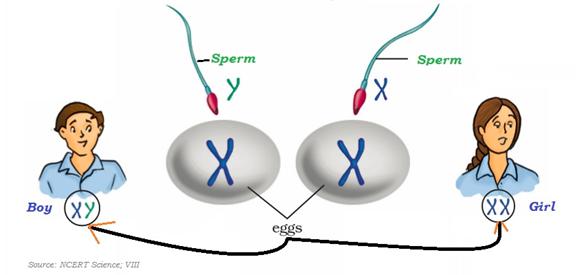
Biology - Heredity and Evolution
Introduction
The principle of heredity determines the process by which traits and characteristics of an organism are reliably inherited.
There are some organisms (especially plants) in which there are very less variations and sometimes difficult to establish the differences, but in some other organisms (especially human beings), there are comparatively greater variations. This is the reason that offspring do not look similar.
Rules for the Inheritance of Traits – Mendel’s Contributions
Johann Mendel is known as "father of modern genetics."
In human beings, the rules for inheritance of traits and characteristics are related to the fact that both the father and the mother equally contribute the genetic material to their child.
Further, each trait of an offspring is usually influenced by both paternal and maternal DNA.
Johann Mendel, who was an Austrian scientist, had experimented on peas and gave the “laws of inheritance.”
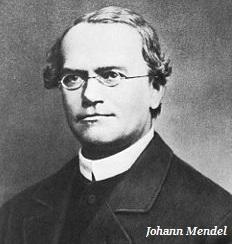
Mendel used a various contrasting visible characters of garden peas – round/wrinkled seeds, tall/short plants, white/violet flowers and many more to prove his law of inheritance.
Mendel’s law of inheritance became popular as “as the laws of Mendelian inheritance.”
The frequency of an inherited trait changes one after another generation. This happens because of change in genes (as genes control traits).
Evolution – Charles Darwin
Charles Darwin was an English geologist, biologist, and naturalist; and, he is best known for his contributions to the science of evolution.
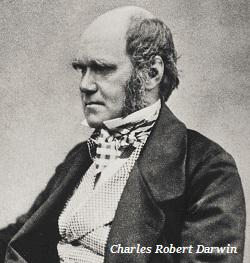
In 1859, Darwin published his book “On the Origin of Species” explaining the theory of evolution (by natural selection).
Darwin’s theory of evolution describes - how life evolved from a simple to more complex forms; whereas, Mendel’s experiments explains the mechanism for the inheritance of traits from one generation to the next.
Evolution is basically the generation of diversity and the shaping of the diversity by the means of environmental selection.
Over period of time, variations in the species may advise survival advantages or merely an example of the genetic drift.
Further, changes in the non-reproductive tissues, are largely because of environmental factors (not by inheritance).
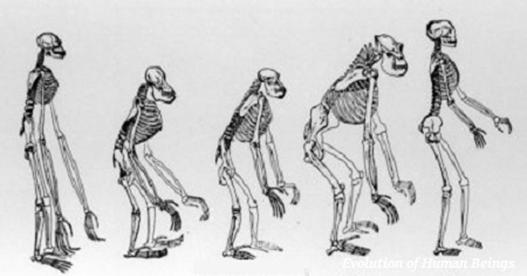
Study of the process of evolution of human beings specifies that most likely all human beings belong to a single species that evolved in Africa continent and over period of time spread across the world in phases.
The complex organs and other features most likely evolved and adapted to cope up with changing environment; the whole phenomenon is known as evolution. E. g., feathers (of birds) are believed to have been initially evolved for warmth, but later adapted for flight.
Biology - Life Processes
Introduction
The processes, which collectively perform the maintenance of our body system, are known as life processes.
The maintenance processes protect us from damage and break-down; however, to keep these maintenance processes working properly, we need to provide energy to them. Healthy food is the best source of such energy.
Nutrition
We need energy from outside in order to grow, develop, synthesize protein, and other substances.
The ultimate source of energy is varieties of healthy foods. These foods provide us nutrition essential for our survival.
Depending upon the sources, nutrition is categorized as Autotrophic Nutrition and Heterotrophic Nutrition.
Autotrophic Nutrition
The autotrophic nutrition is prepared through the process of photosynthesis.
Photosynthesis is a process by which autotrophic organisms (green plants) take in substances from the outside and then convert them into stored forms of energy.
During the process of photosynthesis, carbon dioxide and water, are converted into carbohydrates in the presence of sunlight and chlorophyll.
The final product carbohydrates provide energy to the plant.
Usually, green leaves are responsible for the photosynthesis process.
During the photosynthesis process, the chlorophylls present in the leaves, absorb the light energy and convert it (light energy) into chemical energy and split the water molecules into hydrogen and oxygen. And, finally carbon dioxide is reduced to hydrogen.

Heterotrophic Nutrition
There are different sources of heterotrophic nutrition; however, the nutrition, which is derived from the autotrophic organisms is known as heterotrophic nutrition.
For example, Amoeba (a unicellular organism) takes in food by using temporary finger-like extensions of the cell surface.
The finger-like extensions of the cell surface fuse over the food particle and form a food-vacuole (see the image given below).
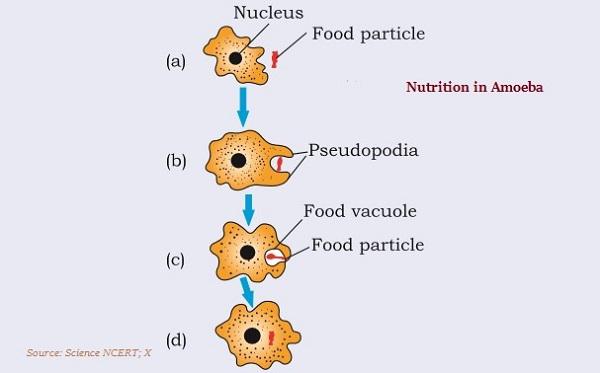
Nutrition in Human Beings
The alimentary canal, starting from the mount to the anus, is fundamentally a long tube and accountable for the whole nutrition process.
As shown in the image below, the alimentary canal has different parts that play different functions.
When we eat any food stuff that we like, our mouth ‘waters,’ which is not only water, but also mixed with a fluid known as saliva.
Saliva is secreted by the salivary glands.
The saliva contains an enzyme known as salivary amylase; this salivary amylase breaks down the starch to give sugar. Starch is a complex molecule.
After the mouth, the food is taken to the stomach through the food-pipe known as oesophagus.
The muscular walls of the stomach support in mixing the food thoroughly in the presence of more digestive juices.
Further, the digestive functions are taken care by the gastric glands, which is present in the wall of the stomach.
The gastric glands release hydrochloric acid, a protein digesting enzyme known as pepsin, and mucus.
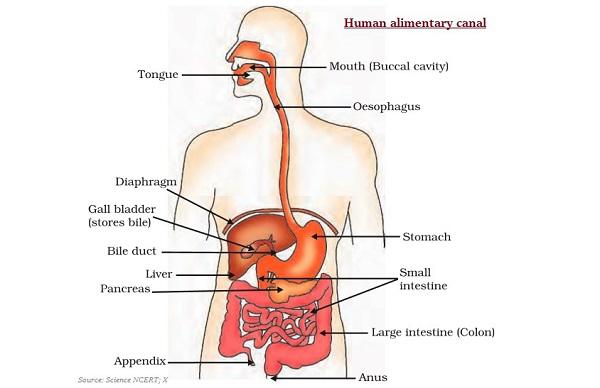
The small intestine (shown in the image above) is the site of the complete digestion of carbohydrates, proteins, and fats.
The walls of the small intestine comprise glands, which secrete intestinal juice.
Further, the digested food is taken up by the walls of the intestine.
The inner lining of the small intestine has typical features i.e. numerous finger-like projections known as villi. Villi increase the surface area for absorption.
The villi are profusely supplied with the blood vessels; the villi take the absorbed food to each and every cell of the body, where it is utilized for obtaining energy, repairing of old tissues, and building up new tissues.
The unabsorbed food is sent into the large intestine where more villi absorb water from this unabsorbed food.
The rest of the waste material is removed from the body through the anus.
Biology - Respiration
Introduction
The food material, taken in during the process of nutrition, is used by cells and then they provide energy for various life processes.
Some organisms use oxygen to break-down glucose completely into carbon dioxide and water, such processes normally take place in cytoplasm.
The following diagram illustrates the whole process of break-down of glucose through various pathways −

During cellular respiration, the energy released, is immediately used to synthesize a molecule known as ATP.
ATP is further used to fuel all other activities in the cell. However, in these processes, ATP is broken down and give rise to a fixed amount of energy. This energy usually drives the endothermic reactions taking place in the cell.
Adenosine triphosphate or simply ATP is a small molecule used in cells as a coenzyme (see image given below).
More often, ATP is referred as the energy currency for most of the cellular processes (especially intracellular energy transfer).

Likewise, ATP transports chemical energy within cells for metabolism purpose.
In plants, at night, when the process of photosynthesis is not taking place, for such a period, CO2 elimination is the major exchange activity.
On the other hand, during the day, the CO2, which is getting generated during respiration, is used up for the photosynthesis process, hence there is no CO2 release. But, at this time, oxygen release is the major event.
The terrestrial animals can breathe the oxygen free available in the atmosphere, but animals that live in water have to use the oxygen dissolved in water.
The rate of breathing in aquatic organisms is much faster than that of terrestrial organisms, because the amount of dissolved oxygen (in water) is fairly low in comparison to the amount of oxygen present in the air.
Respiration in Human
In human beings, air is inhale into the body through the nostrils.
Through the nostrils, the air passes through the throat and into the lungs.
Further, there are Rings of cartilage, present in the throat; these rings ensure that the air-passage does not collapse (see the image given below).
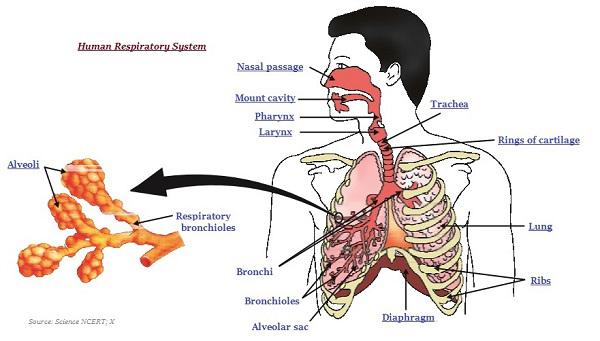
Within the lungs, the passage gets divided into smaller and smaller tubes (see the image above), which finally terminate in balloon-like structures known as alveoli.
The alveoli provide a base or surface where the exchange of gases can take place.
The walls of the alveoli comprise an extensive network of blood-vessels. So, while breathing in, we lift our ribs and flatten our diaphragm; as result of this, the chest cavity becomes larger. During the process, air is sucked into the lungs and fills the expanded alveoli.
The blood, on the other hand, brings carbon dioxide from the rest of the body for release into the alveoli, and the oxygen in the alveolar air is taken up by blood in the alveolar blood vessels for further transportation to all the cells in the body.
Remember, during the breathing cycle, when we take air in and let it out, the lungs always store a residual volume of air so that there is sufficient time for the oxygen to be absorbed and for the carbon dioxide to be released.
In human bodies, the respiratory pigment is haemoglobin; and the haemoglobin has a high affinity for oxygen.
The haemoglobin is present in the red blood corpuscles.
In comparison to oxygen, carbon dioxide is more soluble in water and hence it is mostly transported in the dissolved form in blood.
Biology - Microorganisms: Friend and Foe
Introduction
The living organisms (available around us), which we cannot see with our naked eyes, are known as microorganisms or microbes.
Microorganisms are classified into the following four major groups −
Bacteria
Fungi
Protozoa
Algae
Viruses
Viruses are also microscopic microorganism.
Viruses get reproduced only inside the cells of the host organism, which may be a bacterium, plant, or animal.
The common ailments, such as cold, influenza (flu), and coughs are caused by viruses.
The serious diseases, such as polio and chicken pox are also caused by viruses.
The diseases like dysentery and malaria are caused by protozoans.
The diseases like typhoid and tuberculosis (TB) are caused by bacteria.
The single celled microorganisms are known as bacteria, algae, and protozoa.
The multicellular microorganisms are known as fungi and algae.
The microorganism can survive in any type of environment ranging from ice cold to hot desert.
Microorganisms are also found in the bodies of animals and human beings.
Microorganisms, such as amoeba, can live alone; whereas the fungi and bacteria live in colonies.
Some of the microorganisms are beneficial to us in many ways whereas some others are harmful and cause diseases to us.
Friendly Microorganisms
Microorganisms are used for various purposes, such as preparation of curd, bread, cake; production of alcohol; cleaning up of the environment; preparation of medicines; etc.
In agriculture, microorganisms are used to increase soil fertility by nitrogen fixation.
The bacterium lactobacillus helps in the formation of curd.
The microorganisms, yeast is used for the commercial production of alcohol and wine.
For the large scale use of yeast, it is grown on natural sugars present in grains like wheat, barley, rice, crushed fruit juices, etc.
The process of conversion of sugar into alcohol (by yeast) is known as fermentation.
Streptomycin, tetracycline, and erythromycin are some of the commonly used antibiotics; these are made from fungi and bacteria.
These days, antibiotics are mixed with the feed of livestock and poultry that check microbial infection in the animals.
Several diseases, such as cholera, tuberculosis, smallpox and hepatitis can be prevented by vaccination.
In 1798, Edward Jenner discovered the vaccine for smallpox.
Harmful Microorganisms
The microorganisms that cause diseases to human beings, animals, and plants, are known as pathogens.
Pathogens enter into humans’ body through the air while breathing, the water while drinking, or the food while eating.
Some pathogens are transmitted by direct contact with an infected person or carried through an animal.
The microbial diseases that normally spread from an infected person to a healthy person through air, water, food or physical contact are known as communicable diseases. E.g. cholera, common cold, chicken pox, tuberculosis, etc.
Female Anopheles mosquito carries the parasite of malaria and known as carrier.
Female Aedes mosquito carries the parasite of dengue virus.
Human Diseases
| Human Disease |
Causative Microorganism |
Mode of Transmission |
| Tuberculosis |
Bacteria |
Air |
| Measles |
Virus |
Air |
| Chicken Pox |
Virus |
Air/Contact |
| Polio |
Virus |
Air/Water |
| Cholera |
Bacteria |
Water/Food |
| Typhoid |
Bacteria |
Water |
| Hepatitis B |
Virus |
Water |
| Malaria |
Protozoa |
Mosquito |
Microorganisms causing Disease in Animals
In 1876, Robert Köch discovered the bacterium (Bacillus anthracis), which causes anthrax disease.
Anthrax, a dangerous disease caused by a bacterium, affects both human and cattle.
Foot and mouth disease of cattle is caused by a virus.
The following table illustrates some Common Plant Diseases caused by Microorganisms −
| Plant Disease |
Causative Microorganism |
Mode of Transmission |
| Citrus canker |
Bacteria |
Air |
| Rust of wheat |
Fungi |
Air, seeds |
| Yellow vein mosaic of bhindi (Okra) |
Virus |
Insects |
Food Preservation
Salts and edible oils are the common chemicals usually used to check the growth of microorganisms, they are known as preservatives.
Sodium benzoate and sodium metabisulphite are also used as common preservatives.
Common salt is usually used to preserve meat and fish for ages.
Sugar reduces the moisture content, which prevents the growth of bacteria; therefore, Jams, jellies, and squashes are preserved by sugar.
Use of oil and vinegar averts spoilage of pickles, as bacteria cannot live in such kind of environment.
When the milk is heated at about 700C for 15 to 30 seconds and then swiftly chilled and stored; the process prevents the growth of microbes. This process was conceptualized by Louis Pasteur; therefore, it is known as pasteurization.
Nitrogen Cycle

Biology - Why do We Fall Ill
Introduction
Health means a state of mental, physical, and social well-being.
The health of an organism largely depends on his/her surroundings or the environment.

Major causes of poor health are - the garbage, which is thrown in an open area nearby residence or streets, or/and the open drain water lying stagnant around the residence area.
The public cleanliness is the key of good health.
Some diseases, last only for a short period of time, are known as acute diseases. E.g. cold, fever, etc.
The diseases that last for a long period of time, even as much as a lifetime, are known as chronic diseases. E.g. asthma, osteoporosis, etc.
Chronic diseases, normally, have very severe long-term effects on people’s health as compared to the acute diseases.
Infectious Diseases
When microbes are the immediate causes of a disease, it is known as infectious diseases.
Some of the major agents of infectious diseases are viruses, bacteria, fungi, and some single-celled animals (protozoans).
Some diseases are caused by the multicellular organisms; such as worms.
Kala-azar or black fever is caused by a protozoan parasite of genus Leishmania (shown in the image given below).
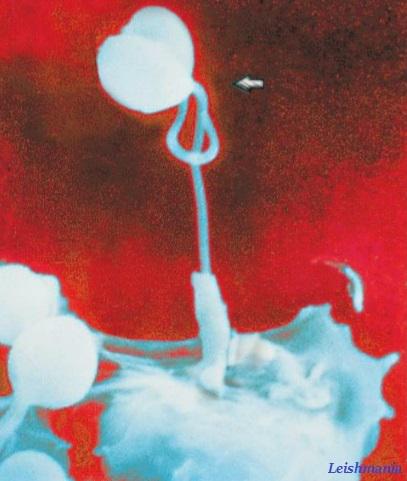
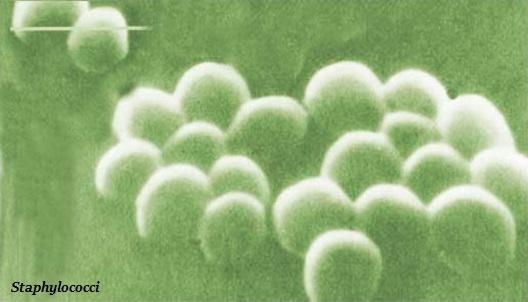
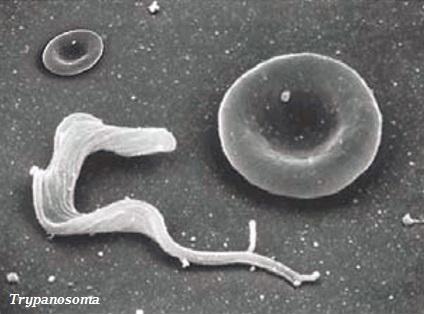
Means of Spread
Most of the microbial agents can commonly move from an affected person to other in number of ways.
The microbial agents are ‘communicated,’ therefore, also known as communicable diseases.
Airborne Diseases
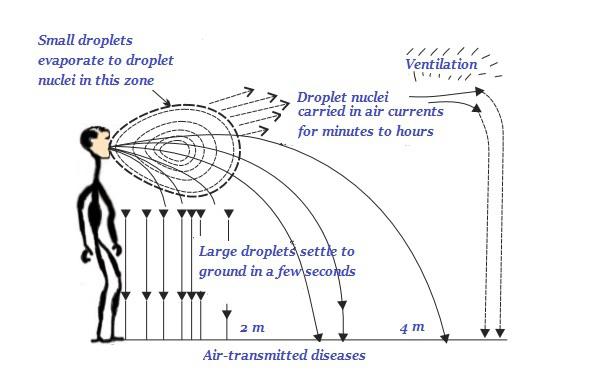
Waterborne Diseases
Vector-borne Infections
Some diseases are transmitted by different animals including human beings; in fact, these animals carry the infecting agents. Therefore, such animals are intermediaries and known as ‘vectors’.
Mosquitoes are the most common vectors.
Prevention
Biology - Natural Resources
Introduction
The resources, available on the Earth and the energy being received from the Sun, are essential to meet the basic necessities of all life-forms on the Earth.
The biotic component incorporates all living of the biosphere.
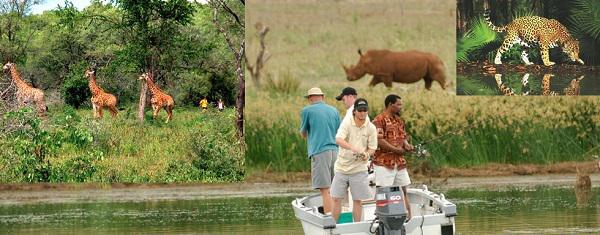
Biogeochemical Cycles
Biogeochemical cycles explain a constant interaction between the biotic and abiotic components of the biosphere.
Biogeochemical cycles are a dynamic phenomenon that helps to maintain the stability in the ecosystem.
The significant biogeochemical cycles are −
Water Cycle
Carbon Cycle
Nitrogen Cycle
Oxygen Cycle
Let’s discuss each of them in brief −
Water Cycle
The whole process, starting from the water evaporation, rainfall to flowing back into the sea via rivers, is known as the water-cycle.

As shown in the image given above, water cycle is a complex phenomenon. During the process of water cycle, it helps ecosystem by maintaining its balance.
Water cycle helps in making new fertile soil, increasing the fertility of soil, providing nutrition to the biotic components in different ecological regions, etc.
Carbon Cycle
Carbon is found on the Earth in various forms, such as diamond and graphite (in solid form) and in combined state i.e. carbon and dioxide (as a gas).
Carbon is one of the essential elements for the photosynthesis.
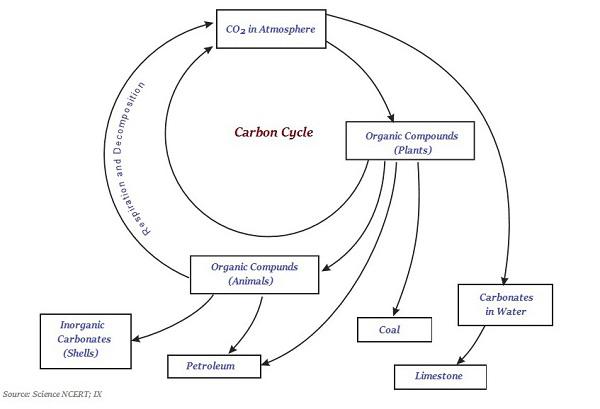
The process of photosynthesis converts carbon dioxide, which is present in the atmosphere or dissolved in water into glucose molecules.
The glucose provides energy to living things that involves the process of respiration.
In the process of respiration, oxygen may or may not be used to convert glucose back into carbon dioxide.
Lastly, the carbon dioxide goes back into the atmosphere.
Nitrogen Cycle
About 78 percent part of our atmosphere is shared by nitrogen alone.
Nitrogen is a part of many molecules, which are essential for the life.
There are a few varieties of bacteria that help in nitrogen-fixing.
These special bacteria convert the comparatively inert nitrogen molecules into nitrates and nitrites essential for the life in direct or indirect way.

Oxygen Cycle
In the total constituents of our atmosphere, about 21 percent is shared by oxygen.
Oxygen is also found in the Earth’s crust.
Oxygen is an essential component of most of the biological molecules, including carbohydrates, nucleic acids, proteins, and fats (or lipids).
Oxygen, present in the atmosphere, is used especially up in the three following processes −

Oxygen is returned back to the atmosphere by the process of photosynthesis.
Oxygen is lifeline of most of the organisms found on the earth, but for some bacteria, it is poisonous.
Biology - Our Environment
Introduction
Environment is a natural world in which all living beings and non-living things exist.
The substances, which are broken down by the biological processes, are known as biodegradable.
The substances, which are NOT broken down by the biological processes, are known as non-biodegradable.

Ecosystem
An ecosystem comprises of biotic components (all living organisms) and abiotic components (all physical factors, such as temperature, rainfall, wind, soil and minerals) of a given area. E.g. Lake ecosystem, Forest ecosystem, Marine ecosystem, etc.
In a given geographic region, all the living organisms interact with each other and their growth, reproduction, and other activities are largely dependent on the abiotic components of the ecosystem.
In an ecosystem, all green plants and certain blue-green algae can produce their food (themselves) by the process of photosynthesis; hence, they are known as the producers.
The organisms, depending on the producers either directly or indirectly, can be termed as herbivores, carnivores, omnivores and parasites.
All those animals that eat plants are known as herbivores (also known as primary consumers). E.g. cow, goat, rabbit, deer, etc.
All those animals that eat other animals are known as carnivores (also known as secondary consumers) E.g. tiger, lion, snake, etc.
All those animals that eat both plants (and its products) and other animals are known as omnivores.
The larger size of carnivores and omnivores animals are known as tertiary consumers.
The microorganisms, such as bacteria and fungi, break-down the dead remains and waste products of organisms and hence they are known as decomposers.

Food Chain
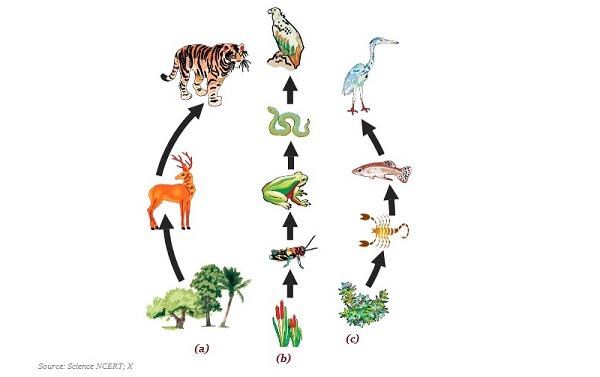
In the given image, (a) illustrates food chain in nature; (b) illustrates food chain in a grassland region; and (c) illustrates food chain of pond ecosystem.
The autotrophs (i.e. producers) exist at the first trophic level.
The herbivores (i.e. the primary consumers) come at the second trophic level.
The small carnivores (i.e. the secondary consumers) comes at the third trophic level and larger carnivores or the tertiary consumers comes at the fourth trophic level.
Transmission of Energy
While transmission of energy from one trophic level to second, large amount of energy gets lost, which cannot be used again.
The green plants (i.e. producers) in a terrestrial ecosystem capture about 1% of the energy of sunlight and convert it into food energy.
Secondly, when primary consumers eat green plants, about 10% of the food eaten is transmitted into its own body and made available for the next level of consumers.
Food Web
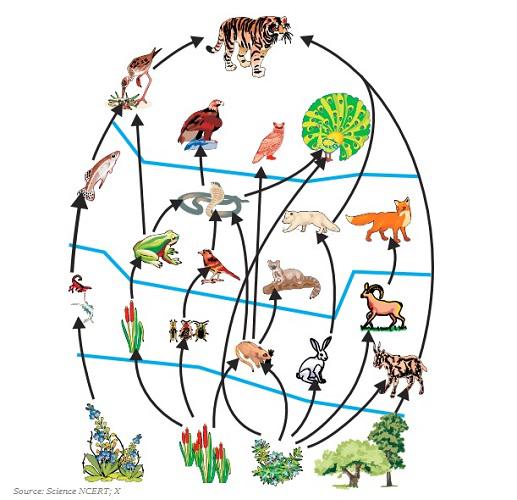
Biology - Conservation of Plants and Animals
Introduction
The varieties of plants and animals that exists on earth, are essential for the wellbeing and survival of mankind.
Clearing of forests and using that land for other purposes is known as deforestation.
Some major consequences of deforestation are forest fires and frequent droughts.
Deforestation increases the temperature and pollution level on the earth.
Deforestation increases the level of carbon dioxide in the atmosphere.
Deforestation causes soil erosion; removal of the top layer of the soil exposes the lower, hard and rocky layers; likewise, the fertile land gets converted into deserts and known as desertification.
Deforestation also decreases the water holding capacity of the soil.
Biological diversity or biodiversity refers to the variety of organisms that exist on the earth, their interrelationships as well as their relationship with the environment.
Biosphere Reserves
To protect and conserve the biodiversity, the government set up rules, methods, and policies and created the protected areas such as wildlife sanctuaries, national parks, biosphere reserves, etc.
Plantation, cultivation, grazing, cutting trees, hunting, and poaching are strictly prohibited there.
The protected area where animals are protected from all sorts of human interference or disturbance (which can harm) to them and their habitat is known as Sanctuary.
The protected area reserved for wild life where they can freely live, use the habitats, and natural resources is known as National Park.
The large protected area for the conservation of wild-life, plant and animal resources, and traditional life of the tribals living in the area is known as Biosphere Reserve.
A biosphere reserve assists to maintain the biodiversity and culture of the respective region.
A biosphere reserve may also have some other protected areas within it. E.g. The Pachmarhi Biosphere Reserve has one national park namely Satpura and two wildlife sanctuaries namely Bori and Pachmarhi.
Endemic species are the species of plants and animals, which are found exclusively in a particular region.
Endemic species are not naturally found anywhere else other than the place where it is found. It means, a specific type of plant or animal may be endemic to a zone, a state or a country. E.g. Bison, Indian giant squirrel and Wild Mango are endemic fauna of Pachmarhi Biosphere Reserve (see the images given below0.
